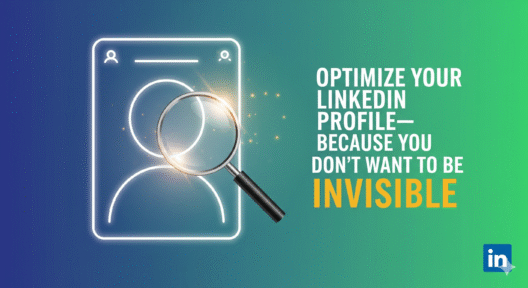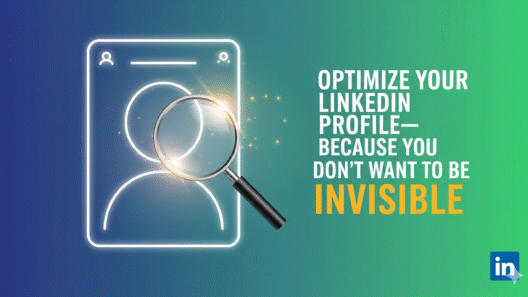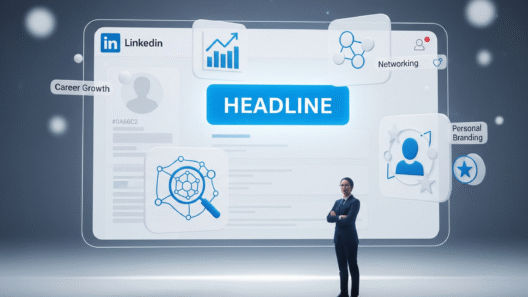A strong LinkedIn “About” section should be concise yet comprehensive, acting as a powerful summary of your professional story. While LinkedIn allows for up to 2,600 characters (around 400-500 words), experts recommend a more focused approach.
The ideal length is typically between 3 to 5 short paragraphs, totaling around 200 to 300 words. This length is long enough to tell a compelling story and include essential keywords, but short enough to be easily read by a busy recruiter.
The first 300 characters (about 50 words) are the most important, as this is all that is visible before the reader has to click “see more.” Use this opening to create a strong hook that grabs the reader’s attention and makes them want to continue reading.
In short, don’t feel the need to fill the entire space. Focus on quality over quantity by writing a summary that is:
- Story-driven: Write in the first person and tell a narrative, rather than just listing job duties.
- Keyword-rich: Naturally embed industry-specific terms to improve your profile’s search ranking.
- Results-oriented: Highlight your accomplishments with numbers and metrics.
- Easy to read: Use short paragraphs, bullet points, and white space to make the text scannable.
Why is LinkedIn so Annoying?
LinkedIn is supposed to be the world’s leading platform for professional networking. In reality, it is one of the most frustrating tools many people are forced to use. Job seekers, recruiters, and working professionals alike often complain about the platform’s culture, features, and business practices. Despite widespread frustration, LinkedIn has become so dominant that avoiding it can damage a person’s career and job hunting prospects. To understand why people dislike LinkedIn so strongly, it is worth looking at the main sources of annoyance.
Cringe Culture and Content
One of the most common complaints about LinkedIn is the content that fills its news feed. Instead of useful insights or professional updates, users are bombarded with exaggerated success stories, fake “inspirational” posts, and endless humblebrags. Or stupid promotions that have nothing to do with your role or situation. Many of these posts are thinly disguised self-promotion, written in corporate clichés rather than plain language. For a platform designed to connect professionals, LinkedIn often feels more like a stage for performance than a space for real conversation.
Spam and Irrelevant Messages
Another major frustration is LinkedIn’s messaging system. Instead of building meaningful professional connections, many users receive daily spam from recruiters and salespeople. These messages are usually automated, impersonal, and irrelevant to the recipient’s skills or career stage. For job seekers, this can feel insulting—like being treated as just another entry in a database rather than as a serious candidate. And if you are using messages to reach out to recruiters, they typically get ignored because recipients have been bombarded with so much spam.
Poor (Non-existent) Customer Service
LinkedIn also has a reputation for neglecting its users when problems arise. Complaints about locked accounts, security issues, and billing errors are common. Many users report that it is nearly impossible to reach a real person for help, leaving them stuck in automated support loops.
Inaccurate Job Matching
For a platform that promotes itself as the key to career advancement, LinkedIn’s job search tools are… flawed. The system pushes irrelevant or outdated job postings, many of which are scams or ghost jobs. Job recommendations don’t align with a user’s experience or skills, creating noise that forces you to sift through opportunities to find something worthwhile.
Privacy Concerns
Another reason people distrust LinkedIn is its reliance on personal data. It collects and sells access to enormous amounts of user information, and individuals have little control over how their data is used. Features like mandatory identity verification force you to to hand over sensitive documents to a company with a weak record of transparency.
A “Necessary Evil”
The biggest problem with LinkedIn is that people feel trapped by it. Despite its flaws, the platform has become the global standard for professional networking. Recruiters rely on it to find candidates, and many employers expect applicants to maintain active profiles. This means that even those who dislike LinkedIn feel compelled to use it, simply to remain visible in their industries. The sense of obligation—being forced to rely on a platform you do not respect—turns annoyance into resentment.
The Bottom Line
LinkedIn’s problems are not small inconveniences; they are structural flaws that affect millions of people who rely on the platform for their livelihoods. From shallow content to privacy risks, the platform has prioritized growth and profit over user experience. Yet its dominance in professional networking makes it nearly impossible to avoid. That tension—knowing LinkedIn is both irritating and essential—is why so many people find the platform uniquely annoying.








